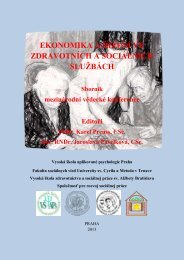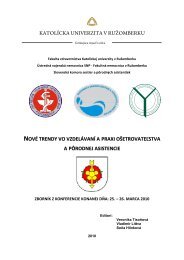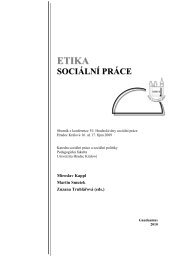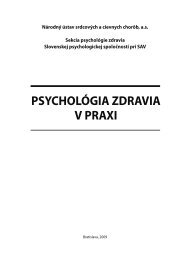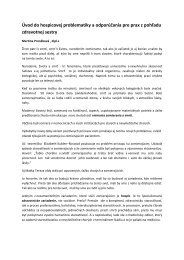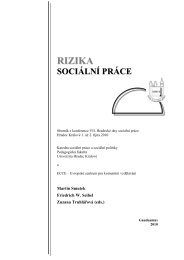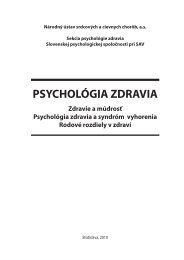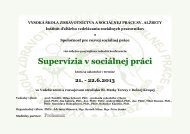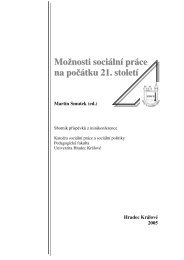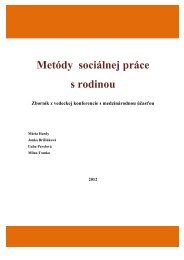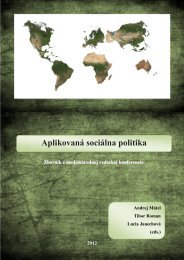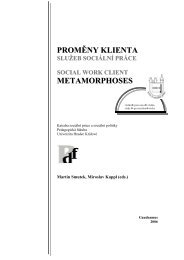Zmena klÃmy â možný dopad (nielen) na obyvateľstvo - Prohuman
Zmena klÃmy â možný dopad (nielen) na obyvateľstvo - Prohuman
Zmena klÃmy â možný dopad (nielen) na obyvateľstvo - Prohuman
Create successful ePaper yourself
Turn your PDF publications into a flip-book with our unique Google optimized e-Paper software.
fairness and a capacity for empathy (Killen, Breton, Ferguson and Handler, 1994;<br />
Killen and Smeta<strong>na</strong>, 1999; Tisak 1995 cited in Killen et al., 2001) from a young age.<br />
Furthermore, as this article will argue, if global citizenship education in primary<br />
and secondary schools is to achieve a level of complexity and deeper understanding<br />
it needs to be more than an occasio<strong>na</strong>l and media driven learning “stir in”<br />
(Bracken and Bryan, 2010), with learning being scaffolded from an early age.<br />
This paper sets out a response to the question of how to begin global citizenship<br />
education with young children in ways that are appropriate, that contribute to the<br />
development of global citizenship skills, attitudes and knowledge and that use<br />
suitable, empowering and learner centred pedagogy.<br />
Theoretical Framework<br />
Global Citizenship Education<br />
Global citizenship education, which, for the purposes of this article, could also<br />
be referred to as global education or development education (Bryan et al., 2009;<br />
Krause, 2010) is concerned with understanding the causes and consequences of<br />
injustice and inequality in the world and in encouraging action to effect social<br />
change (Bryan et al., 2009; Oxfam, 1997; Davies, 2006; Krause, 2010; Fiedler et al,<br />
2008). While approaches to and conceptions of global citizenship education vary,<br />
there is relative consensus that it involves the development of attitudes, dispositions<br />
and skills, as well as knowledge about the unequal distribution of wealth, life<br />
chances and power, about connections between wealth and poverty, progress and<br />
inequality, and about inter<strong>na</strong>tio<strong>na</strong>l relations. Further, it is broadly accepted that<br />
these educations encompass core components which include the relationship<br />
between the developing and developed world, critical thinking and perso<strong>na</strong>l reflection<br />
and that pedagogies are interactive and active (Fiedler et al, 2008; Regan,<br />
2006; Pike and Selby, 2000; Hicks, 2003; Case, 1993; Oxfam, 2006; Krause, 2010).<br />
Approaches to global citizenship education can vary across a range of dimensions,<br />
including levels of engagement with issues of power, openness to critical<br />
thinking and ideas of causality and culpability. At one end of the continuum are<br />
those approaches that prioritise ‘soft’ global citizenship education, focussing on respect<br />
for cultural differences, recognition of the effects of poverty and the promotion<br />
of global solidarity. At the other end of the continuum a “critical” approach to<br />
global citizenship education highlights the importance of a post–colonial framework<br />
in exploring development issues (Andreotti, 2006; Bryan, 2008). This approach<br />
characteristically emphasises the asymmetrical power relations between<br />
165




